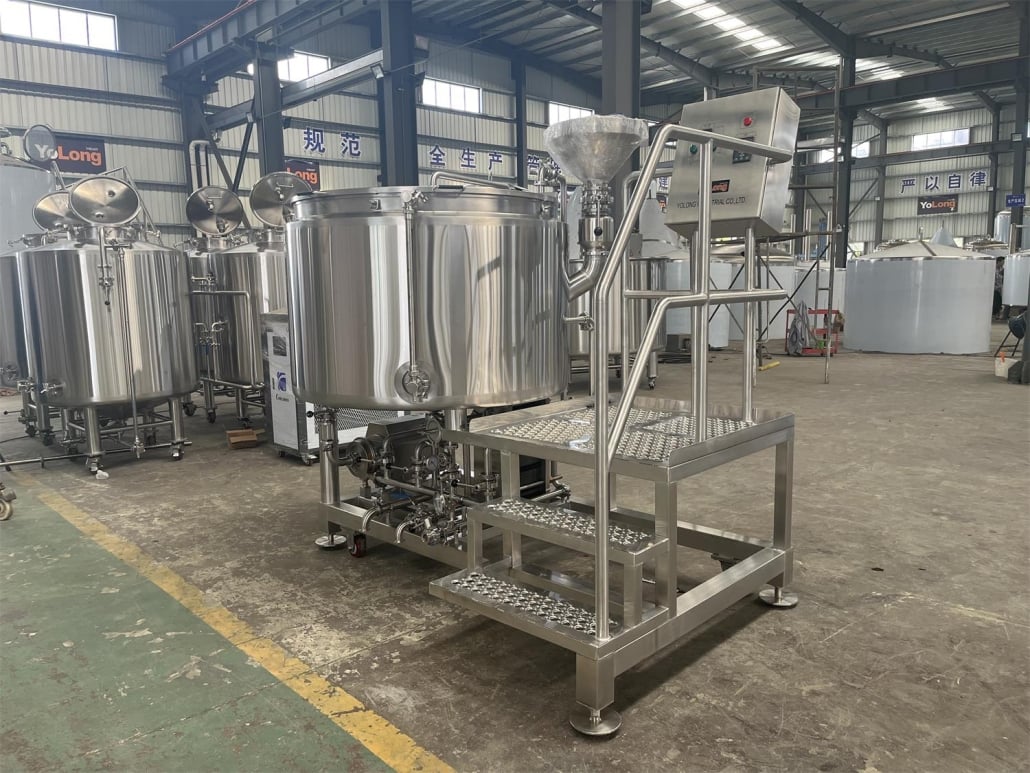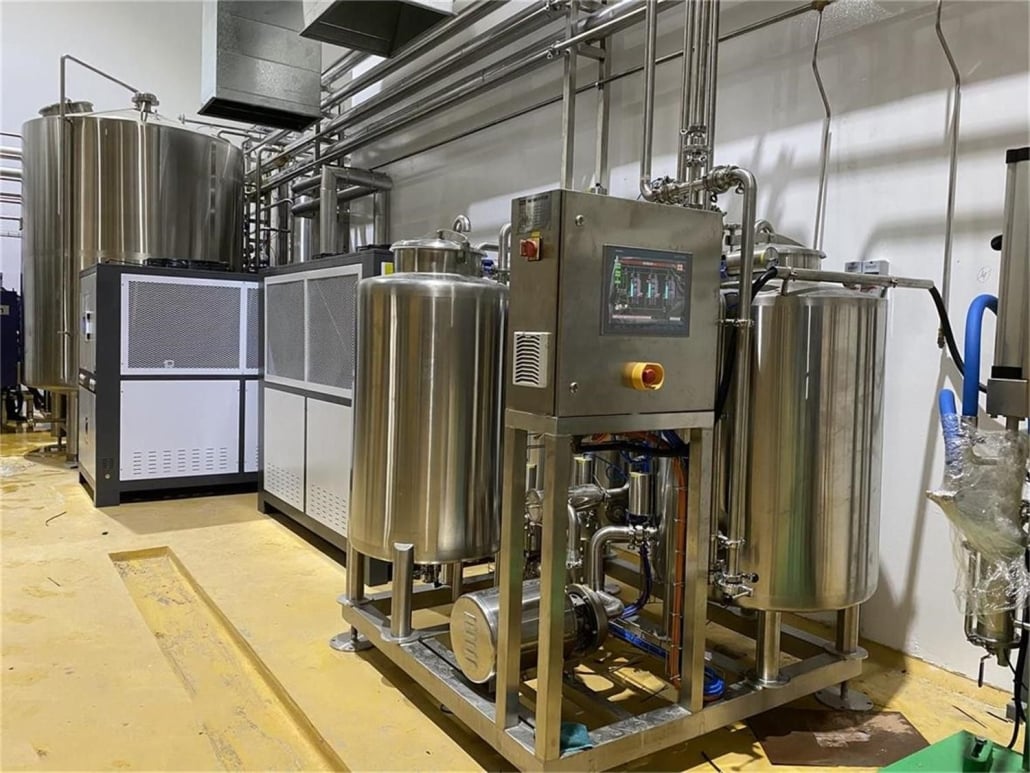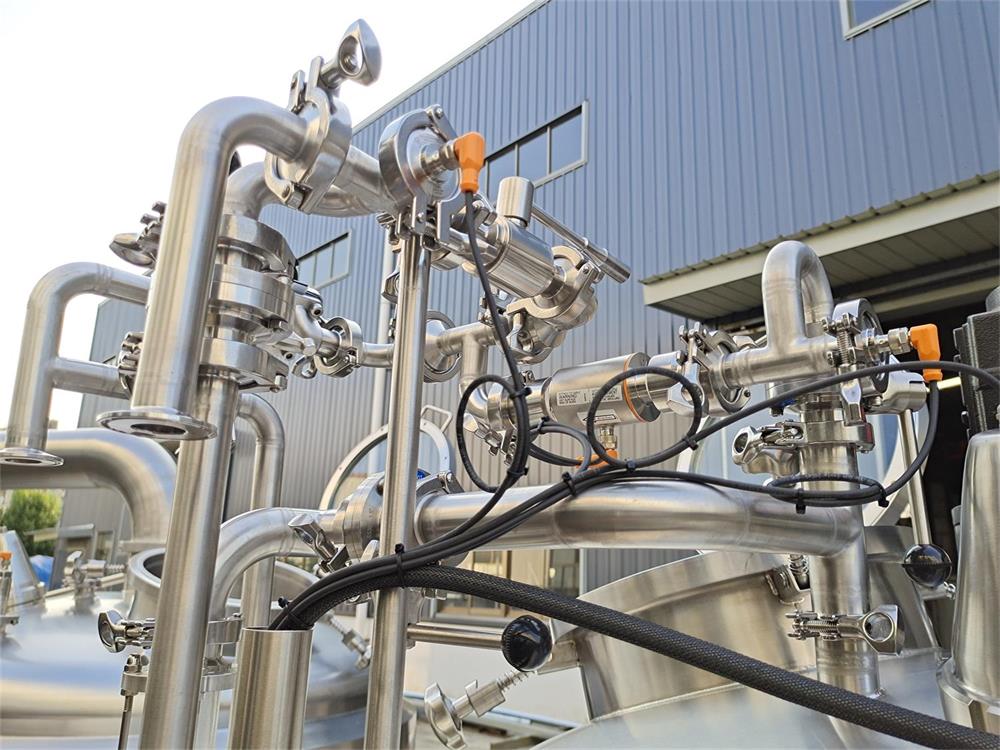The Ultimate Guide to Fermenter Tanks
Overview: Understanding Fermenter Tanks
Fermenter tanks play a crucial role in industries such as brewing, winemaking, and biofuel production. These tanks provide a controlled environment for the fermentation process, turning raw materials like sugars and starches into desired products like alcohol or biofuels. Choosing the right fermenter tank can be the difference between a smooth, efficient process and costly setbacks.
This guide covers everything from the basics of fermenter tanks to detailed equipment guides, comparisons, and maintenance tips. By the end, you’ll have a clear understanding of the best options available and how to navigate this essential piece of equipment for your operations.

Key Aspects to Consider in Fermenter Tanks
| Aspect | Description |
|---|---|
| Tank Capacity | Capacity can range from a few liters for home brewing to thousands of liters for commercial production. |
| Material | Stainless steel is standard due to durability, but some use glass or plastic for specific applications. |
| Temperature Control | Essential for consistent fermentation; tanks can include cooling jackets or external chillers. |
| Design and Shape | Cylindroconical designs are popular for efficient yeast collection and cleaning. |
| Sealing and Pressure | Tanks can be sealed for anaerobic fermentation or left open, depending on the application. |
Types of Fermenter Tanks
| Type | Characteristics |
|---|---|
| Open-top Fermenters | Primarily used for specific ales, allowing yeast and other organisms to interact with the environment. |
| Closed Fermenters | Provide a sealed environment, controlling oxygen exposure and preserving flavors. |
| Cylindroconical Tanks | Most common in breweries, these have a conical base for efficient yeast harvesting and cleaning. |
| Horizontal Tanks | Used for lagering, providing increased surface area for certain fermentation needs. |
| Jacketed Fermenters | These tanks include built-in cooling or heating systems to manage fermentation temperature. |
Detailed Brewing Process in Fermenter Tanks
The fermentation process starts with selecting the correct tank type and preparing the wort (in beer brewing) or must (in winemaking). Once transferred into the tank, yeast is added to start fermentation. Here’s a breakdown of the process:
- Preparation and Filling: The raw material is prepared and sterilized, reducing contamination risks.
- Pitching the Yeast: Yeast is added based on the specific type of fermentation—top or bottom fermentation.
- Active Fermentation: Temperature, pressure, and other conditions are controlled for optimal yeast activity.
- Secondary Fermentation (Conditioning): Some tanks allow for secondary fermentation, which enhances flavor.
- Cleaning and Reusing Tanks: Post-fermentation, tanks are sanitized to ensure the longevity of equipment and product quality.
Capacity, Space, Design, and Customization
| Factor | Explanation |
|---|---|
| Capacity | Larger tanks allow for more production but may require more space and infrastructure investment. |
| Space and Layout | Tanks must fit within a designated space, considering accessibility for cleaning and maintenance. |
| Design | Conical, cylindrical, and custom shapes affect both function and appearance in a production facility. |
| Customization Options | Custom features like built-in cooling coils or extra ports can enhance functionality for specific uses. |
Fermenter Tank Suppliers and Price Range
| Supplier | Price Range (USD) | Key Features |
|---|---|---|
| ABC Brewing Supplies | $5,000 – $20,000 | Offers customized fermenters with heating and cooling options for large breweries. |
| BrewTech Innovations | $3,000 – $15,000 | Known for durability and easy maintenance designs suitable for medium breweries. |
| HomeBrewer’s Source | $200 – $2,000 | Budget-friendly options for home brewers, including smaller stainless steel tanks. |
| MegaVats Inc. | $7,000 – $25,000 | Specializes in high-capacity, automated fermenters for large-scale operations. |
Installation, Operation, and Maintenance of Fermenter Tanks
| Step | Details |
|---|---|
| Installation | Ensuring the tank is set up in a temperature-controlled, accessible area with adequate ventilation. |
| Operation | Adjust settings according to fermentation needs—temperature, pressure, oxygen levels as required. |
| Maintenance | Routine cleaning with sanitizing agents prevents contamination and extends the tank’s operational life. |
| Repairs | Regular checks for leaks, loose fittings, or damage, and quick repair to avoid disrupting production. |
Choosing a Fermenter Tank Supplier
| Factor | What to Look For |
|---|---|
| Reputation | Reviews and feedback from previous clients for quality assurance. |
| Customization Options | Ability to meet specific needs, like size, cooling, or pressure handling capabilities. |
| After-sales Support | Strong support helps with setup, maintenance advice, and troubleshooting issues. |
| Delivery and Installation Services | Suppliers that handle delivery and setup can save significant time and effort. |
| Warranty | Long warranties indicate confidence in product durability and quality. |
Comparing Pros and Cons of Fermenter Tanks
| Feature | Advantages | Limitations |
|---|---|---|
| Stainless Steel | Durable, easy to clean, resistant to rust | Can be expensive, heavy to move |
| Glass Fermenters | Transparent, good for monitoring | Fragile, typically only available in smaller sizes |
| Plastic Fermenters | Lightweight, affordable | Prone to scratches, harder to sanitize |
| Jacketed Fermenters | Precise temperature control | Higher cost, requires more complex setup |
| Open-top Fermenters | Allows natural yeast exposure | Limited to specific types of fermentation like ales |

FAQs
| Question | Answer |
|---|---|
| What is the best material for fermenter tanks? | Stainless steel is most popular for its durability and ease of cleaning, though glass and plastic have niche applications. |
| How does temperature control work in fermenters? | Many tanks have jackets that allow glycol to circulate, keeping the fermentation at optimal temperatures. |
| What size fermenter tank should I choose? | This depends on your production volume. For home brewing, a 5-gallon tank suffices, while commercial setups may need multiple 1,000-gallon tanks. |
| How often should I clean a fermenter tank? | Tanks should be cleaned and sanitized after every use to prevent contamination. |
| Are fermenter tanks expensive to maintain? | Routine maintenance is low-cost, though repairs can be pricier if tanks aren’t regularly checked and cleaned. |
Additional FAQs About Fermenter Tanks (2025)
1) What pressure rating should I specify for modern fermenter tanks?
For brewery use, 15 psi working pressure (with an ASME-rated PRV) supports spunding, carbonation, and closed transfers. Wine typically uses non-pressurized or low-pressure tanks.
2) How do I choose the right interior finish for cleanability?
Specify ≤0.8 μm (32 Ra) mechanical polish as a baseline; electropolish further reduces biofilm risk in cold-side vessels and shortens CIP cycles.
3) Are horizontal fermenter tanks still relevant?
Yes. Horizontal lagering tanks increase surface area-to-depth ratio, accelerating clarification for lagers and freeing vertical tanks for primary fermentation.
4) What’s the best way to validate CIP in fermenter tanks?
Use riboflavin coverage tests for spray balls, confirm return temperature/flow, and measure detergent concentration. Log time, temp, chemistry, and flow for each CIP run.
5) How should I size glycol jackets and chillers for fermentation?
Estimate 1.0–1.5 tons of refrigeration per actively fermenting 10 bbl equivalent; 0.5–0.8 tons per brite/storage tank. Verify heat-load with OEMs and local ambient assumptions.
2025 Industry Trends for Fermenter Tanks
- Unitank dominance: Pressure-rated cylindroconical tanks enabling fermentation, carbonation, and packaging from one vessel.
- Low-oxygen workflows: Closed transfers, CO2-purged hop additions, inline DO at brite—now standard in quality-focused breweries.
- Smart cellars: More tanks ship with temp/pressure/level sensors, PLC/HMI connectivity, and cloud logging for batch records and maintenance alerts.
- Sustainability ROI: Heat recovery, VFD pumps, insulated heads/cones, and low-water CIP cut utilities and earn rebates.
- Finish and weld quality upgrades: Wider adoption of electropolish and orbital TIG standards to reduce micro risk and cleaning time.
Fermenter Tank Benchmarks (2024–2025)
| Metric | 2024 | 2025 (proj.) | Notes/Source |
|---|---|---|---|
| Share of new brewery tanks purchased as pressure-rated unitanks | ~60% | ~72% | OEM catalogs; distributor feedback |
| Breweries using closed transfers to brite/keg | ~55% | ~68% | QA audits; trade forums |
| Inline DO meters on brite tanks (adoption) | ~42% | ~58% | Supplier shipments |
| Typical water-to-beer ratio (hl/hl) with optimized CIP | 4.5–5.5 | 3.6–4.8 | Brewers Association benchmarking |
| Electropolished interior spec on new cold-side vessels | ~50% | ~65% | Vendor specs; RFQ data |
| Average crash cool (68°F→35°F) with balanced glycol | 26–32 h | 22–28 h | Integrator case studies |
Authoritative references:
- Brewers Association sustainability/benchmarks: https://www.brewersassociation.org/sustainability
- Master Brewers Association of the Americas (MBAA) Technical Quarterly: https://www.mbaa.com/publications/tq
- American Society of Brewing Chemists (ASBC) Methods: https://www.asbcnet.org
- U.S. DOE Better Plants calculators (energy/water): https://www.energy.gov/better-plants
Latest Research Cases
Case Study 1: Upgrading to Pressure-Rated Unitanks Improves Stability (2025)
Background: A microbrewery experienced elevated DO from FV→BBT transfers and variable carbonation.
Solution: Replaced legacy non-pressurized fermenters with 15 psi unitanks, added spunding valves and carb stones; implemented closed transfers and documented CIP validation.
Results: Brite DO fell from ~120 ppb to ~40 ppb; carbonation time decreased by ~30%; cellar labor reduced ~1.2 hours per batch.
Case Study 2: CIP Optimization Cuts Utilities and Turn Times (2024)
Background: Rising utilities and long cleaning cycles on 30–60 bbl fermenter tanks.
Solution: Installed higher-efficiency rotating spray balls, verified coverage via riboflavin, added VFDs on CIP pumps, and standardized detergent titration.
Results: CIP cycle time reduced 25–30%; water-to-beer improved by 0.6–0.9 hl/hl; estimated payback in 14–20 months with local rebates.
Expert Opinions
- Tom Shellhammer, Ph.D., Professor of Fermentation Science, Oregon State University
Key viewpoint: “Design fermenter tanks and SOPs to minimize oxygen exposure from transfer to package—flavor stability benefits are significant and measurable.” - Mary Pellettieri, QA Consultant; Author of “Quality Management for Craft Beer”
Key viewpoint: “Sanitary sample valves, reliable thermowells, and documented QC checks (pH, gravity, DO, micro) are non-negotiable for consistent outcomes.” - John Mallett, Author of “Malt”; former VP Operations, Bell’s Brewery
Key viewpoint: “Cleanability and temperature control outrank add-ons. Specify quality welds, finishes, and jacket performance for repeatable fermentation.”
Practical Tools and Resources
- Compliance and planning
- TTB Permits Online (U.S.): https://www.ttb.gov/beer/permits
- SBA financial templates: https://www.sba.gov
- Technical standards and QA
- ASBC Methods: https://www.asbcnet.org
- MBAA Best Practices/TQ: https://www.mbaa.com
- Sustainability and utilities
- Brewers Association calculators/guides: https://www.brewersassociation.org/sustainability
- DOE Better Plants (steam/motors/heat recovery): https://www.energy.gov/better-plants
- Procurement and community
- ProBrewer forums/classifieds: https://www.probrewer.com
- BrewBids marketplace: https://brewbids.com
- Process software
- Brewfather (batch/cellar logging): https://brewfather.app
- BeerSmith (recipes/records): https://beersmith.com
Last updated: 2025-09-30
Changelog: Added 5 focused FAQs, 2025 benchmark table for fermenter tanks, two case studies on unitank upgrades and CIP optimization, expert viewpoints, and curated tools/resources.
Next review date & triggers: 2026-03-31 or earlier if BA benchmarking updates, OEMs change standard finishes/pressure specs, or new utility rebate programs affect fermenter tank ROI.
Share this entry
Interested in learning more about Brewing Systems including additional details and pricing information? Please use the form below to contact us!
YOLONG BREWERY EQUIPMENT FAQS
- Commercial Brewery / Craft Brewery / Microbrewery / Nanobrewery
- What is The Difference Between Craft Beer and Industrial Beer?
- The Bespoke Differences In Custom Brewing Systems
- Everything You Need to Know About Kettle Souring
- How to Choose Brewing Equipment for Your business?
- How To Choose The-Best Partner To Build Your Commercial Microbrewing System?
- Two Detection Sensors That You Need To Use In Your Brewhouse System
- Remote Control Applications in Brewing Equipment/How does it work?
- How To Clean Your Brand New Brewery Tanks?

